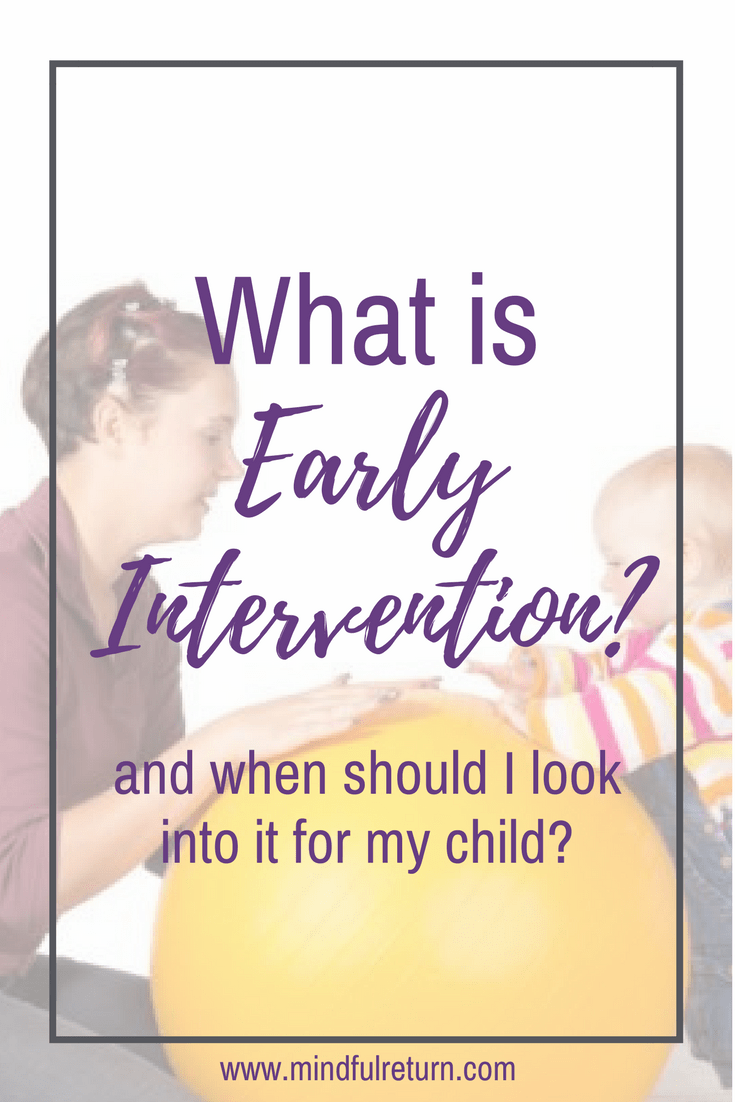 As a working mom of a little one, you’ve got a million things on your plate. And probably two million things you’re worried about. One issue that may be top of mind, though, is whether your baby is “on track” developmentally. Today, I’m honored to be joined by Monica Taylor, a special education early intervention teacher who is also mama to three boys. Monica is here to explain what exactly early intervention is, and when you might want to look into using early intervention resources for your child.
As a working mom of a little one, you’ve got a million things on your plate. And probably two million things you’re worried about. One issue that may be top of mind, though, is whether your baby is “on track” developmentally. Today, I’m honored to be joined by Monica Taylor, a special education early intervention teacher who is also mama to three boys. Monica is here to explain what exactly early intervention is, and when you might want to look into using early intervention resources for your child.
What exactly is early intervention?
Early intervention is support for children ages birth through age 3 (and sometimes through age 4 or 5 as well). The model and services often vary by state and district. They also vary between being free and having a sliding scale cost depending on family income.
The model of early intervention usually involves an Individualized Family Service Plan (IFSP) and often involves family coaching. Rather than the traditional school model where a child works directly with a teacher or therapist (usually without the parent in a school setting), early intervention often takes place in the family home or child care, and involves the parent or caregiver. The sessions are focused on family-centered outcomes, based on family priorities, routines and needs.
Eligibility also varies from state to state, but usually the ways a child is eligible for early intervention include:
- Being born with a pre-existing condition with a high probability of delay (such a Down’s Syndrome);
- Having a developmental delay in one or more areas of development (cognition, language, motor skills, self-help skills, and social emotional skills); and
- Having atypical development in one or more areas of development.
In some states and districts, early intervention is run through the public school system. In others, it is run by the Department of Health and Human Services or another agency. Families are usually the ones to refer their own child for testing, but often a doctor or child care worker may notice an issue and recommend that the family make the call.
While the process for determining eligibility varies by state and district, usually the first step is making a referral. Then, the agency conducts screening and testing to determine if the child is eligible. If the child meets eligibility criteria, the family then has a choice of whether or not to participate in services. Usually this process is free or low cost. So, if a family is on the fence about whether or not to refer a child, I always encourage families to do so.
If the child is not eligible, parents can have peace of mind of knowing that their child is progressing normally. The specialists who conduct the testing also give parents good advice and their questions. The specialists can also refer parents to other community resources, as needed.
Should I refer my child for early intervention?
Many parents ask me: “how do I know if I should refer my child for early intervention?” I often refer them to resources with developmental milestones, such as the MSDE Healthy Beginnings website. This website has developmental charts, as well as activity ideas for parents and caregivers to help children grow.
Seeing that your child is not reaching developmental milestones would be an indicator to refer to early intervention. I also recommend using your child’s pediatrician as a resource. They have their own assessments and checklists they use at each well visit.
However, I also encourage parents to get a second opinion when needed, and to trust their gut. In my personal experience, I was worried that my first son wasn’t talking. At his 2 year check-up, his doctor me make a list of words he said, and told me not to worry. However, I was still concerned and had been for a while. So, I called my local Infants and Toddlers Program anyway for an evaluation. It turns out my son did have a speech delay and was eligible for services. Sometimes it is difficult for doctors to catch every delay in their short visits with you, and you know your child best. If you are worried, I recommend referring your child for an evaluation.
Remember that there is a range of normal development for every skill, such as walking and talking. Comparing your child to other children of the same age can sometimes be helpful. But sometimes it can cause anxiety, if your child is not progressing at the same rate as her friend.
Also, keep in mind that if your child has a delay, that does not mean you are doing something wrong. Parents tend to blame themselves (unnecessarily) if their child is not progressing the way they should. The best thing you can do if your child has a delay is to get support as early as possible, so that when it’s time for elementary school, there are supports in place to help them be successful.
Do you have experience using early intervention resources? Please share with other mamas in comments.
Monica Taylor is a mother to 3 beautiful, energetic boys, and a special education early intervention teacher. She spends her  days striving for a balance between family and work life, and looking for ways to live more simply.
days striving for a balance between family and work life, and looking for ways to live more simply.
Want more help with the return to work after maternity leave? Join the next session of Mindful Return and connect with other mamas who are all going back to work the same time you are.


